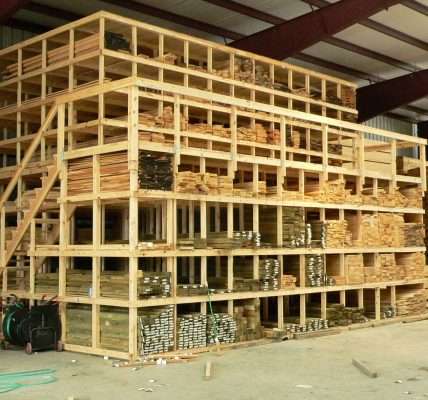The year 1900 marked a pivotal point in construction history, a transition between traditional methods and the dawn of modern engineering․ Construction relied heavily on locally sourced and readily available resources․ Understanding the building materials used in 1900 gives us insight into the limitations and innovations of the era․ This was a time before widespread concrete production and advanced steel alloys dominated the landscape, so the choice of building materials used in 1900 was driven by practicality and geographical constraints;
Several materials were staples in the construction industry at the turn of the century:
- Wood: Still the dominant material, especially in residential construction․ Timber framing, wood siding, and shingles were ubiquitous․ Different wood species were chosen based on their availability, durability, and resistance to rot․
- Brick: A popular choice for more substantial buildings and urban areas․ Brick manufacturing was becoming more efficient, leading to increased availability and lower costs․ The color and quality of brick varied depending on the clay source and firing process․
- Stone: Used primarily for foundations, load-bearing walls, and decorative elements in more affluent buildings․ Quarries provided a variety of stone types, including granite, limestone, and sandstone․ Stone construction was labor-intensive and therefore more expensive․
- Cast Iron: Increasingly used for structural elements, especially in industrial buildings and skyscrapers․ Cast iron allowed for larger spans and greater load-bearing capacity than wood․ However, its brittleness made it susceptible to failure under stress․
While traditional materials reigned supreme, several emerging technologies were beginning to influence the construction landscape:
- Steel: Bessemer steel production was becoming more widespread, leading to lower costs and greater availability of steel for construction․ Steel framing was beginning to replace cast iron in skyscrapers, offering superior strength and ductility․
- Concrete: Portland cement production was increasing, paving the way for the use of concrete in foundations, walls, and pavements․ However, reinforced concrete was still in its early stages of development․
- Glass: Advances in glass manufacturing led to larger window panes and more widespread use of glass in buildings․ This improved natural lighting and ventilation․
The specific building materials used in 1900 varied significantly depending on the region․ For example:
- Brick and stone were common in urban areas․
- Wood was widely used in suburban and rural areas․
- Slate was a popular roofing material․
- Wood was the primary building material․
- Cypress and pine were commonly used due to their abundance․
- Local brick production was also prevalent․
- Wood was the dominant material, particularly redwood and Douglas fir․
- Adobe construction was common in the Southwest․
- Stone was used for foundations and fortifications․
The selection and application of those materials shaped the built environment of the era․ In conclusion, the understanding of building materials used in 1900 offers a glimpse into the past, demonstrating how resource availability and technological advancement influenced architectural styles and construction practices․
The year 1900 marked a pivotal point in construction history, a transition between traditional methods and the dawn of modern engineering․ Construction relied heavily on locally sourced and readily available resources․ Understanding the building materials used in 1900 gives us insight into the limitations and innovations of the era․ This was a time before widespread concrete production and advanced steel alloys dominated the landscape, so the choice of building materials used in 1900 was driven by practicality and geographical constraints․
Common Building Materials
Several materials were staples in the construction industry at the turn of the century:
- Wood: Still the dominant material, especially in residential construction․ Timber framing, wood siding, and shingles were ubiquitous․ Different wood species were chosen based on their availability, durability, and resistance to rot․
- Brick: A popular choice for more substantial buildings and urban areas․ Brick manufacturing was becoming more efficient, leading to increased availability and lower costs․ The color and quality of brick varied depending on the clay source and firing process․
- Stone: Used primarily for foundations, load-bearing walls, and decorative elements in more affluent buildings․ Quarries provided a variety of stone types, including granite, limestone, and sandstone․ Stone construction was labor-intensive and therefore more expensive;
- Cast Iron: Increasingly used for structural elements, especially in industrial buildings and skyscrapers․ Cast iron allowed for larger spans and greater load-bearing capacity than wood․ However, its brittleness made it susceptible to failure under stress․
Emerging Technologies
While traditional materials reigned supreme, several emerging technologies were beginning to influence the construction landscape:
- Steel: Bessemer steel production was becoming more widespread, leading to lower costs and greater availability of steel for construction․ Steel framing was beginning to replace cast iron in skyscrapers, offering superior strength and ductility․
- Concrete: Portland cement production was increasing, paving the way for the use of concrete in foundations, walls, and pavements․ However, reinforced concrete was still in its early stages of development․
- Glass: Advances in glass manufacturing led to larger window panes and more widespread use of glass in buildings․ This improved natural lighting and ventilation․
Regional Variations
The specific building materials used in 1900 varied significantly depending on the region․ For example:
Northeastern United States
- Brick and stone were common in urban areas․
- Wood was widely used in suburban and rural areas․
- Slate was a popular roofing material․
Southern United States
- Wood was the primary building material․
- Cypress and pine were commonly used due to their abundance․
- Local brick production was also prevalent․
Western United States
- Wood was the dominant material, particularly redwood and Douglas fir․
- Adobe construction was common in the Southwest․
- Stone was used for foundations and fortifications․
The selection and application of those materials shaped the built environment of the era․ In conclusion, the understanding of building materials used in 1900 offers a glimpse into the past, demonstrating how resource availability and technological advancement influenced architectural styles and construction practices․
Beyond the Basics: Whispers of the Future
But the story doesn’t end with brick and timber․ Look closer, and you’ll find intriguing anomalies, whispers of future possibilities woven into the very fabric of the past․ Consider the experimental “fireproof” houses being erected with a mysterious compound called “asbestos cement” – little did they know the silent dangers it held․ Or the early attempts at prefabrication, where entire sections of homes were assembled in factories and shipped across the country via railway, a foreshadowing of the mass-produced housing developments to come․
The Untapped Potential: Earth and Innovation
We often overlook the ingenuity born of necessity․ In regions where timber was scarce, resourceful builders turned to the earth itself, crafting dwellings from rammed earth or adobe bricks․ These structures, naturally temperature-regulating and surprisingly durable, stand as a testament to human adaptability․ And then there were the mavericks, the inventors tinkering in their workshops, dreaming of lighter, stronger, more efficient materials․ Imagine a world where bamboo, a rapidly renewable resource, was explored with the scientific rigor it deserved – a potential building material largely ignored at the time, yet brimming with possibilities․
A Legacy of Craft and Risk
The buildings of 1900, constructed from these materials, are more than just structures; they are time capsules, holding within their walls the stories of the artisans who shaped them․ Each nail hammered, each brick laid, speaks of a dedication to craft, a willingness to experiment, and a certain degree of risk․ They remind us that progress is not always linear, that innovation often comes from unexpected places, and that even the most humble materials can be transformed into something extraordinary․ These are the lessons embedded in the very essence of 1900’s construction, a legacy that continues to inspire and inform the building practices of today, urging us to look beyond the conventional and embrace the potential of the materials around us․


